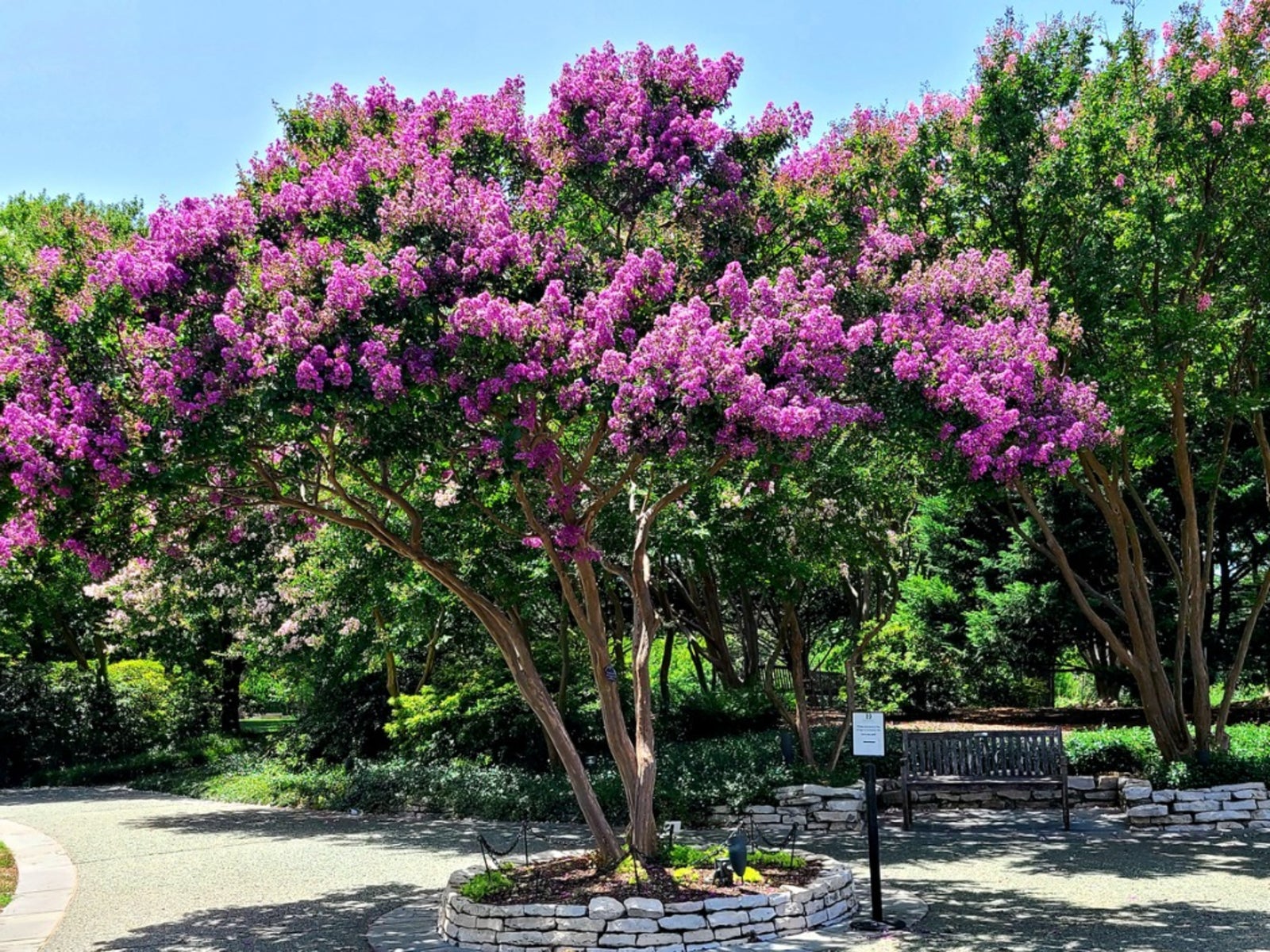Crepe Myrtle Blight Treatment: How To Treat Crepe Myrtle Tip Blight


Crepe myrtle trees (Lagerstroemia indica), also spelled crape myrtle, offer so much beauty that it’s no wonder they are favorite shrubs in southern gardens. The petals – white, pink, red, or purple – are paper thin and delicate, the blooms enormous and beautiful. These lovely trees are usually trouble free, but even crepe myrtles have a few issues that crop up. One of these is called crepe myrtle tip blight. What is crepe myrtle blight? Read on for information about blight and ways of treating blight on crepe myrtle.
What is Crepe Myrtle Blight?
Crepe myrtle tip blight results from a fungus that causes leaves near the tips of the tree branches to turn brown in spring or summer. Look closely at the infected foliage to see the small black spore-bearing bodies.
Crepe Myrtle Blight Treatment
Treating blight on crepe myrtle begins with proper care and cultivation practices. Like many fungal diseases, crepe myrtle tip blight can be discouraged by following a few simple rules about caring for your trees. Crepe myrtle trees need regular irrigation to bloom and thrive. However, they don’t need overhead watering. Overhead watering moistens the foliage which encourages the fungus to develop. Another good way to use prevention as part of crepe myrtle blight treatment is to encourage air circulation around the plants. Prune out branches that cross and those that head into the tree center to allow air into the crepe myrtles. Don’t forget to sterilize your pruning tool by dipping it in bleach. This avoids spreading the fungus. Another action you can take to prevent the fungus is to remove old mulch regularly and replace it. The crepe myrtle tip blight fungus spores collect on that mulch so removing it can prevent an outbreak from recurring. Before you begin using fungicide as a crepe myrtle blight treatment, make sure your tree’s problem is crepe myrtle tip blight. Take in leaves and twigs to your local garden store for advice on this. Once the diagnosis is confirmed, you can use fungicide to help your trees. Spray the infected crepe myrtle trees with copper fungicide or lime sulfur fungicide. Start spraying when the leaf tip symptoms first show up, then repeat every ten days during wet weather.
Sign up for the Gardening Know How newsletter today and receive a free copy of our e-book "How to Grow Delicious Tomatoes".

Teo Spengler is a master gardener and a docent at the San Francisco Botanical Garden, where she hosts public tours. She has studied horticulture and written about nature, trees, plants, and gardening for more than two decades. Her extended family includes some 30 houseplants and hundreds of outdoor plants, including 250 trees, which are her main passion. Spengler currently splits her life between San Francisco and the French Basque Country, though she was raised in Alaska, giving her experience of gardening in a range of climates.